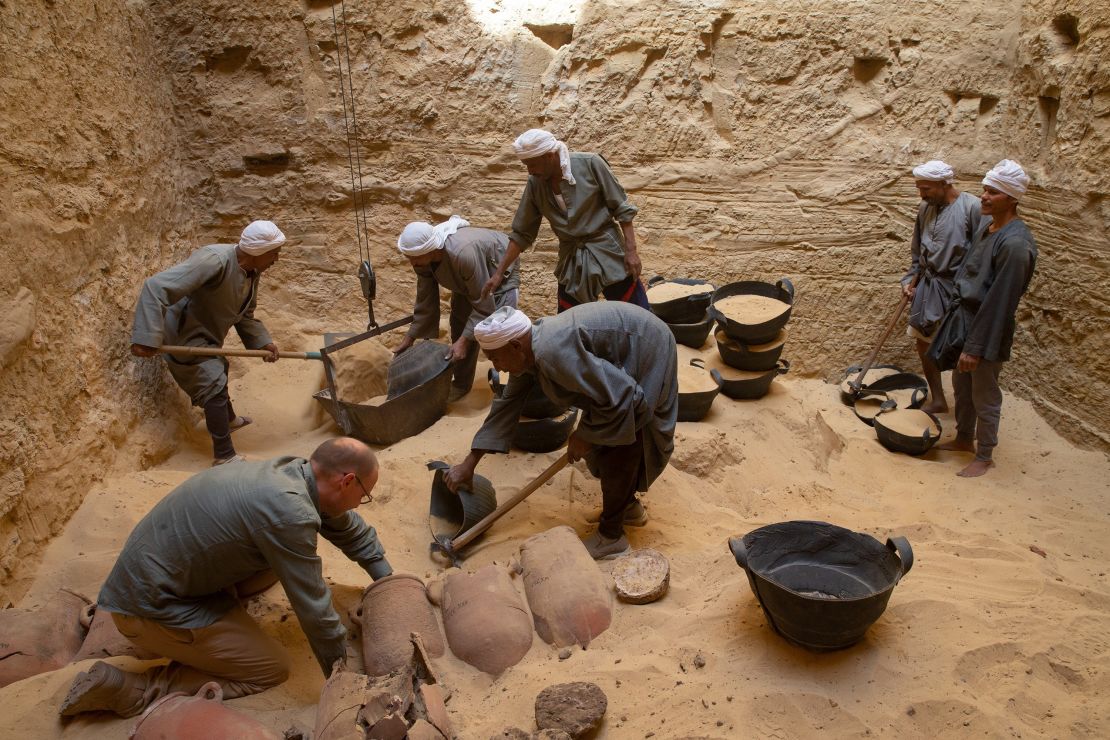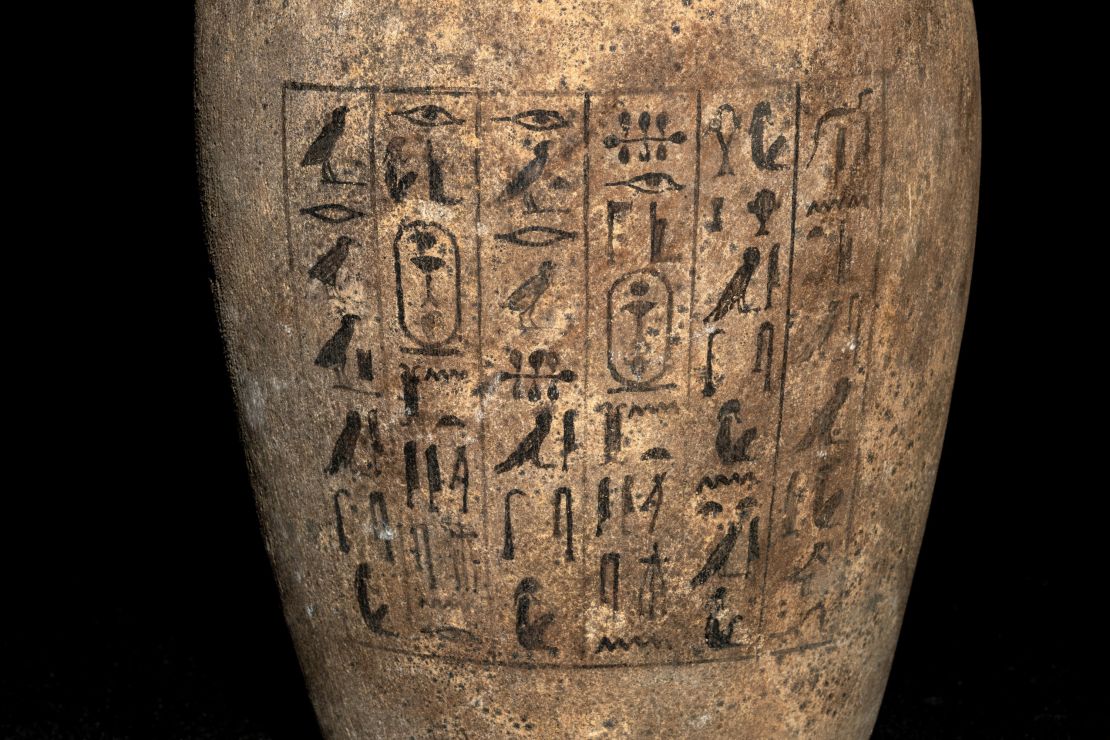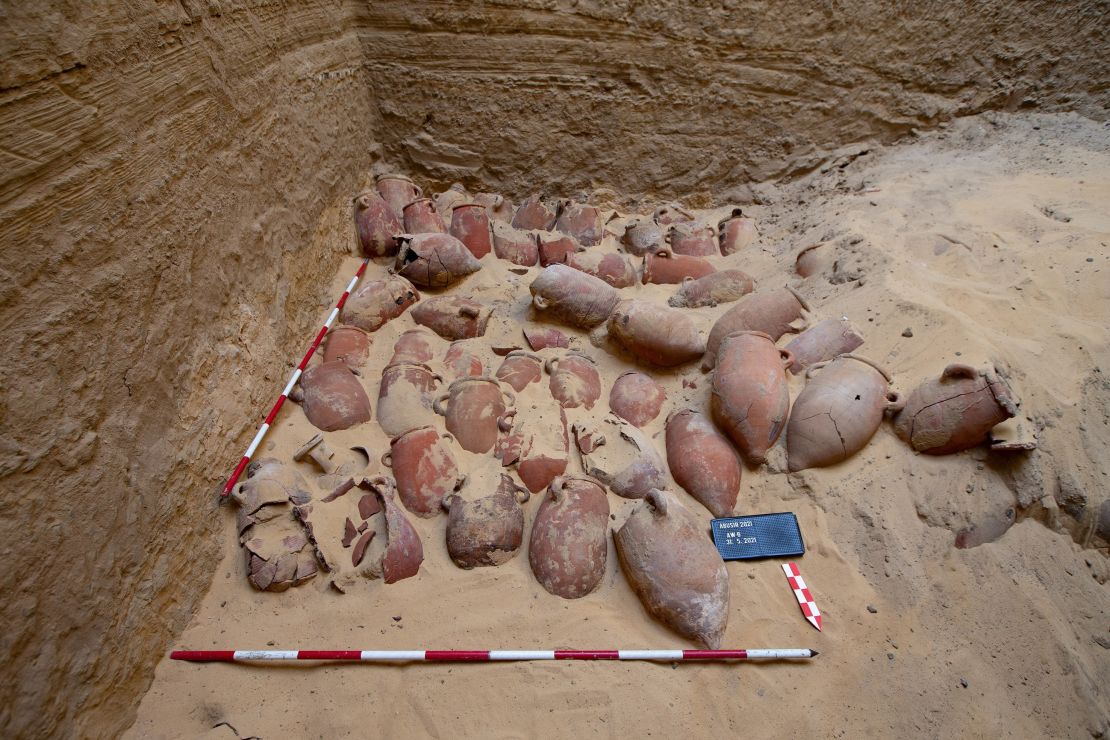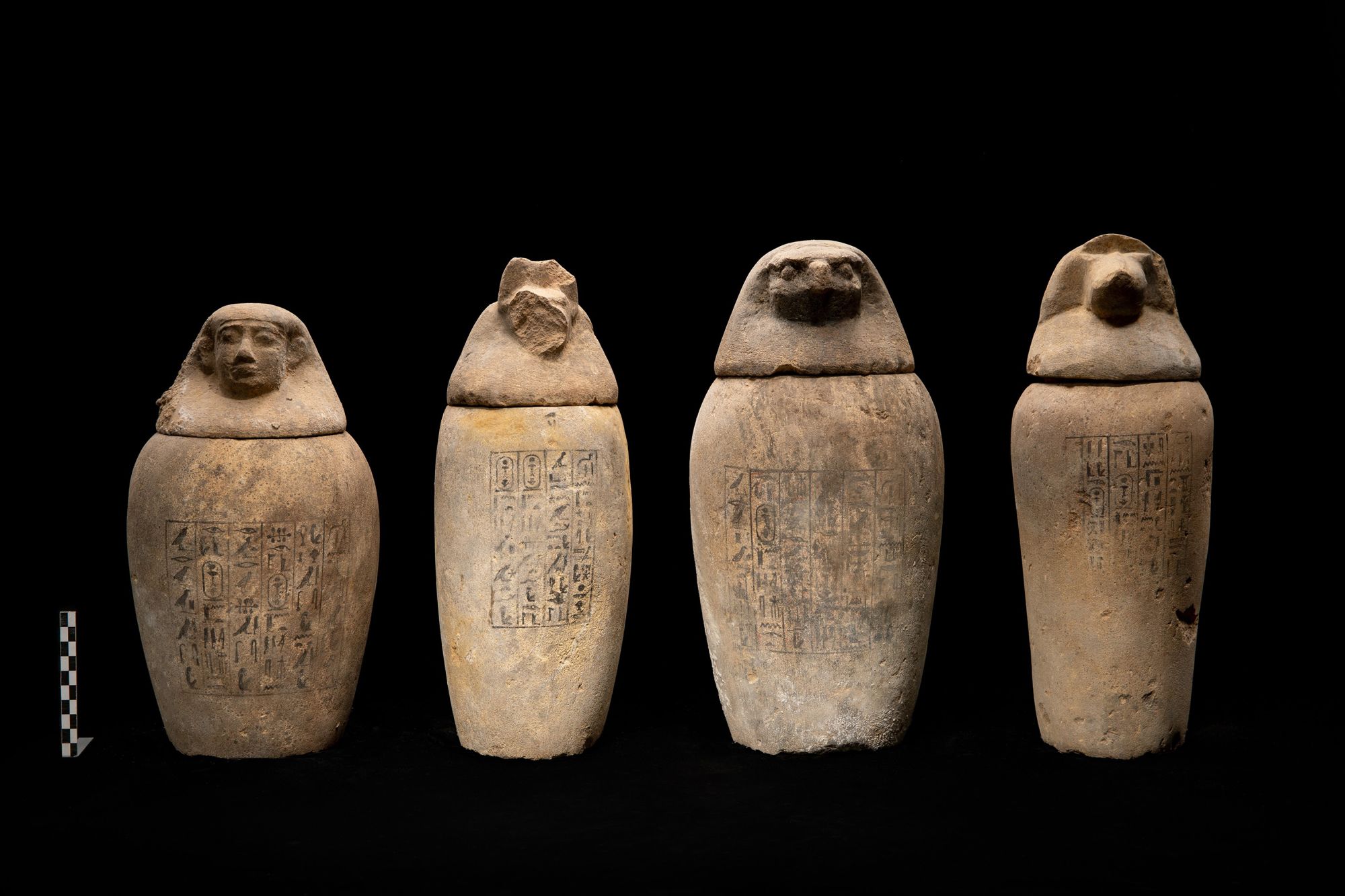Deep inside a shaft in the cemetery of Abusir, near Cairo, a team of Egyptian and Czech Egyptologists has found a significant cache of equipment used more than 2,500 years ago to embalm mummies.
The set includes 370 pottery storage jars and several smaller vessels, making it the largest of its kind ever found, according to the Czech Institute of Egyptology of Prague’s Charles University, which has been exploring the necropolis site for more than three decades. The discovery occurred during routine excavations of the area, which includes several large known tombs and potentially more that have yet to be unearthed.
Some of the vessels contained residues of various materials used during the mummification process, as well as tools. The archaeologists also found canopic jars, which were used by Egyptians to store the embalmed viscera of the deceased and typically left next to their owner. These particular ones, however, were empty and unused.

“We are still looking for a definitive explanation on why that is the case,” said Jiří Janák, faculty member of the Czech Institute of Egyptology, in an email. “Maybe they were only symbolic Canopic jars, used for ritual protection of the embalming workshop. We still cannot be sure, at least until the burial structure will be completely excavated.”
The vessels may be empty, but they have inscriptions on them, indicating they belonged to one Wahibre-mery-Neith, son of the Lady Irturu, a revelation that left the team puzzled, because a number of dignitaries of that name are known from this period, but none of them can be identified as the definitive owner of these canopic jars.

“Judging from the size of the embalming deposit and, mainly, from the dimensions and arrangement of the nearby tomb, the owner of the tomb (and of the deposit) must have belonged to the highest dignitaries of his time, together with his closest neighbours in the cemetery – the famous admiral Udjahorresnet and general Menekhibnekau,” he added.
An embalming deposit belonging to general Menekhibnekau was discovered in his tomb by the same Czech Egyptological team back in 2006. It contained several vessels inscribed with captions specifying when a particular substance – such as oils, balsams, myrrh or textiles – should have been used during the embalming process. Researchers hope that the new find could help understand the process further.
“A discovery like this represents a great source of valuable information on burial customs used by Egyptian social elite of the Late Period and on the mummification process itself,” Janák added.

“Luckily, embalming deposits hardly attracted thieves and tomb robbers. For them, the amount of hard work needed to excavate the shaft was not worth it. But for scientists, the very opposite is true. We are very happy to have found this deposit complete and intact.”
Now, archaeologists plan to conduct a more detailed scientific analysis of the vessels and their contents, and further excavate the site, to possibly reveal the tomb of Whaibre-mery-Neith, the deposit’s owner.



